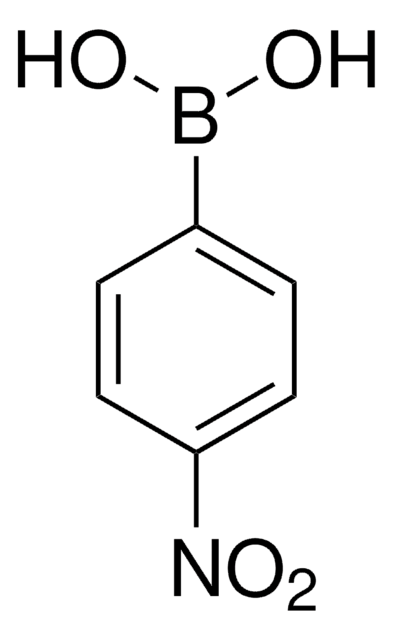417599
4-Methoxyphenylboronic acid
≥95.0%
Synonym(s):
(4-Methoxyphenyl)boric acid, (p-Methoxyphenyl)boronic acid, 4-Anisylboronic acid, 4-Methoxybenzeneboronic acid, p-Anisylboronic acid, p-Methoxybenzeneboronic acid
About This Item
Recommended Products
Assay
≥95.0%
form
powder
mp
204-206 °C (lit.)
SMILES string
COc1ccc(cc1)B(O)O
InChI
1S/C7H9BO3/c1-11-7-4-2-6(3-5-7)8(9)10/h2-5,9-10H,1H3
InChI key
VOAAEKKFGLPLLU-UHFFFAOYSA-N
Looking for similar products? Visit Product Comparison Guide
Related Categories
Application
- Suzuki-Miyaura cross-coupling reactions
- Pd-catalyzed direct arylation
- Highly effective synthesis using palladium-catalyzed arylation Suzuki-Miyaura cross-coupling in water
- Palladium-catalyzed stereoselective Heck-type reaction
- Tandem-type Pd(II)-catalyzed oxidative Heck reaction and intramolecular C-H amidation sequence
- Copper-mediated ligandless aerobic fluoroalkylation of arylboronic acids with fluoroalkyl iodides
- Ruthenium catalyzed direct arylation
- Rh-catalyzed asymmetric conjugate addition
- Ligand-free copper-catalyzed coupling
Reagent used in Preparation of
- Palladium(II) thiocarboxamide complexes as Suzuki coupling catalyst
- Push-pull arylvinyldiazine chromophores with photophysical properties
Other Notes
Signal Word
Warning
Hazard Statements
Precautionary Statements
Hazard Classifications
Eye Irrit. 2 - Skin Irrit. 2 - STOT SE 3
Target Organs
Respiratory system
Storage Class Code
11 - Combustible Solids
WGK
WGK 3
Flash Point(F)
Not applicable
Flash Point(C)
Not applicable
Personal Protective Equipment
Certificates of Analysis (COA)
Search for Certificates of Analysis (COA) by entering the products Lot/Batch Number. Lot and Batch Numbers can be found on a product’s label following the words ‘Lot’ or ‘Batch’.
Already Own This Product?
Find documentation for the products that you have recently purchased in the Document Library.
Customers Also Viewed
Our team of scientists has experience in all areas of research including Life Science, Material Science, Chemical Synthesis, Chromatography, Analytical and many others.
Contact Technical Service













